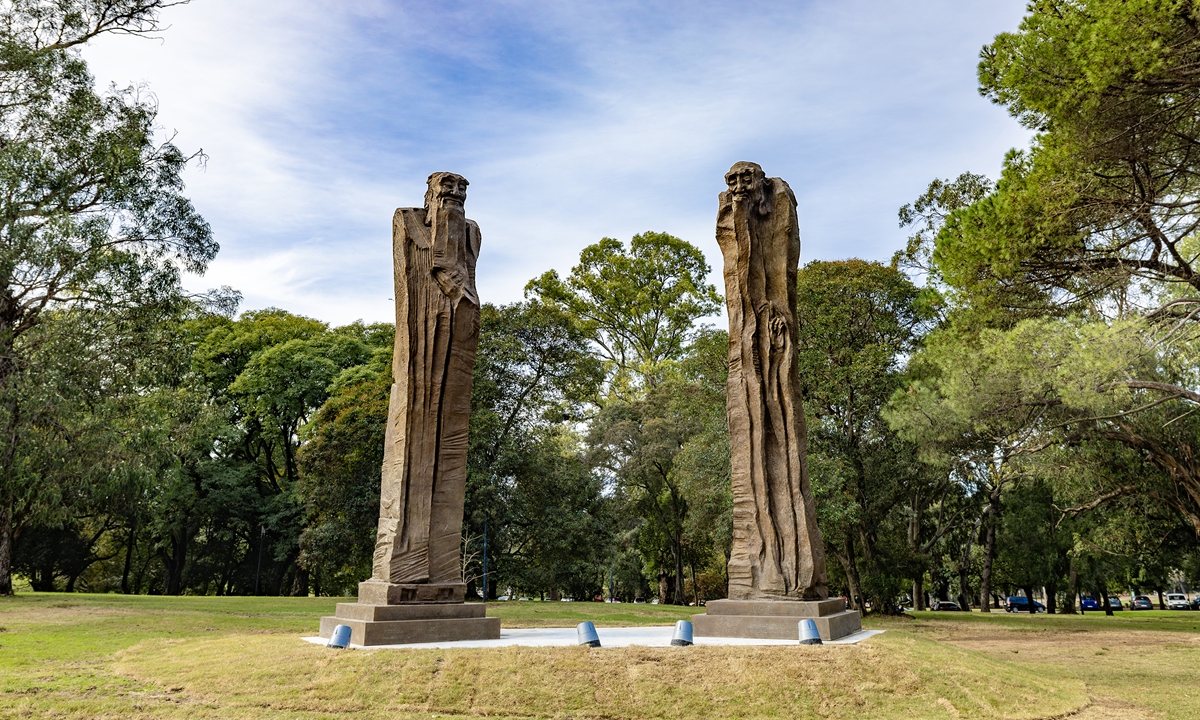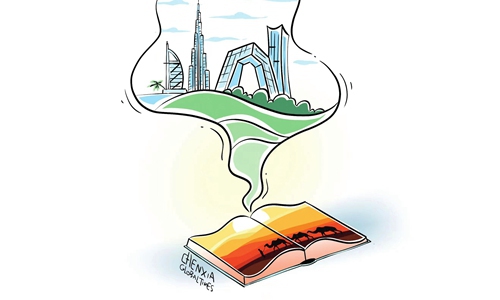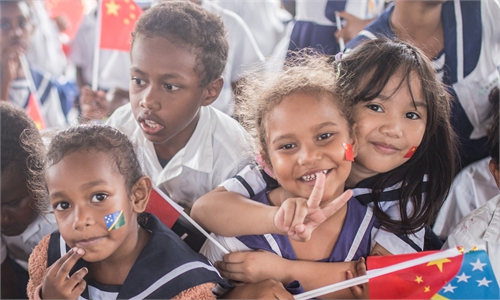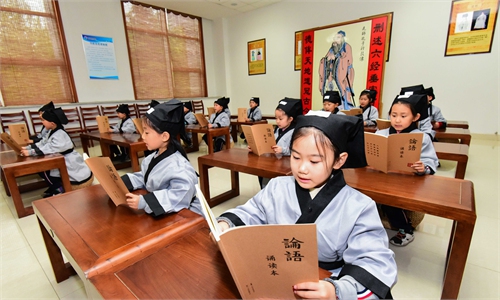ARTS / CULTURE & LEISURE
Confucius, Lao Tzu sculptures by Wu Weishan unveiled in Uruguay

Sculptures by Chinese artist Wu Weishan, titled In Search of Wisdom - Confucius Asking Lao Tzu about the Tao, stand at the Batlle Park in Montevideo, capital of Uruguay, on May 29, 2024. Photo: Courtesy of the National Art Museum of China
Sculptures of the great Chinese philosophers Confucius and Lao Tzu by Chinese artist Wu Weishan were unveiled at Batlle Park in Montevideo, capital of Uruguay, on Wednesday.The bronze artwork, titled In Search of Wisdom - Confucius Asking Lao Tzu about the Tao, consists of two pieces, each weighing more than 6 tons. This project was
conceptualized during an official Uruguayan visit to China in 2018 and was realized after nearly six years of joint efforts.
Wu, director of the National Art Museum of China (NAMOC), noted in a letter read at the inauguration that his work represents an important reference in the development of Chinese civilization: the philosopher Confucius asking another philosopher, Lao Tzu, about the Tao, a central idea in Taoism. Tao represents the fundamental nature and source of the universe, encompassing the underlying order and flow of all life.
According to Wu, the statues of Confucius and Lao Tzu, each more than 7 meters tall, stand like monumental peaks, symbolizing the benevolence of a mountain and the wisdom of water. Benevolence and wisdom represent the Tao of the Chinese people.
In Search of Wisdom demonstrates that only by combining exploration and practice can extensive dialogue be generated worldwide, fostering understanding and emotional connections, promoting development and building a community of shared future for mankind, Wu said in his letter .
China's ambassador to Uruguay, Huang Yazhong, stated in his speech that Confucianism and Daoism, represented by Confucius and Lao Tzu respectively, are important components of traditional Chinese philosophy. The classic story of Confucius asking Lao Tzu about the Tao showcases mutual tolerance and respect, a cultural legacy from the ancestors of the Chinese people.
The Global Civilization Initiative proposed by China also advocates respect for the diversity of world civilizations, maintaining equality, mutual learning, dialogue, and inclusiveness among civilizations. Cultural exchange is an important part of China-Uruguay relations, and China hopes the relationship will continue to develop smoothly and the friendship between China and Uruguay will grow stronger, added the diplomat.
Mauricio Zunino, the mayor of Montevideo, noted in his speech that the placement of statues of China's two greatest philosophers adds a new scenic spot to Montevideo that will bring new cultural enjoyment to citizens and tourists.
"Wu's masterpiece showcases the profound heritage of Chinese culture and embodies great wisdom and values," Zunino said.
The artwork also demonstrates that although China and Uruguay are geographically distant, their pursuit of wisdom is the same. Uruguay looks forward to further deepening exchanges and cooperation in various fields with China, bringing the people of both countries closer together, Zunino added.
At the unveiling ceremony, Huang and Zunino planted a ginkgo tree next to the sculptures, symbolizing the enduring friendship between China and Uruguay.



